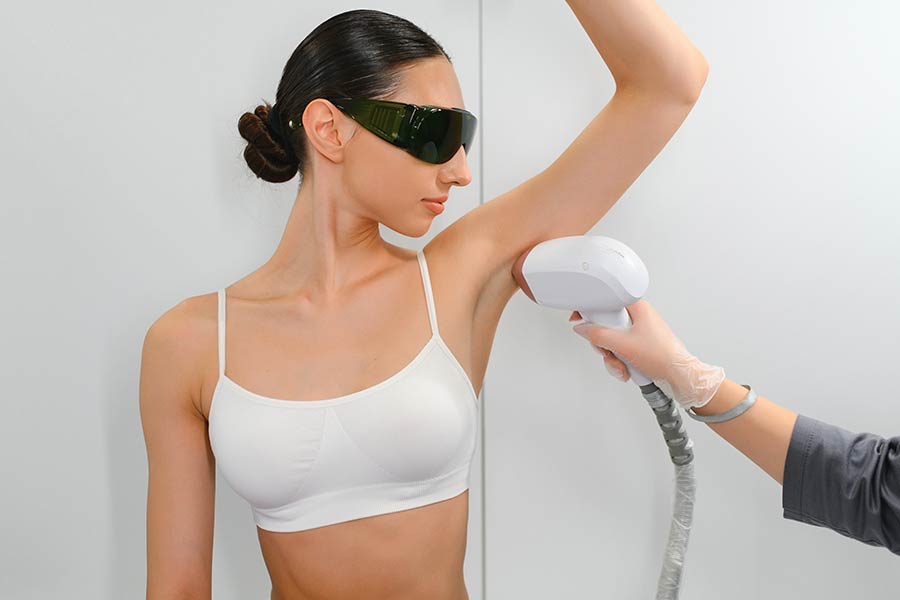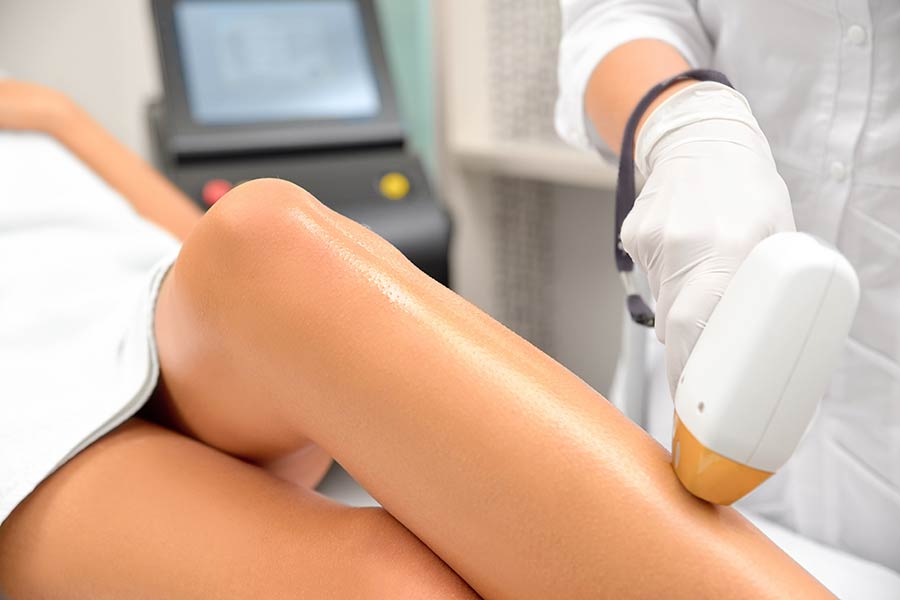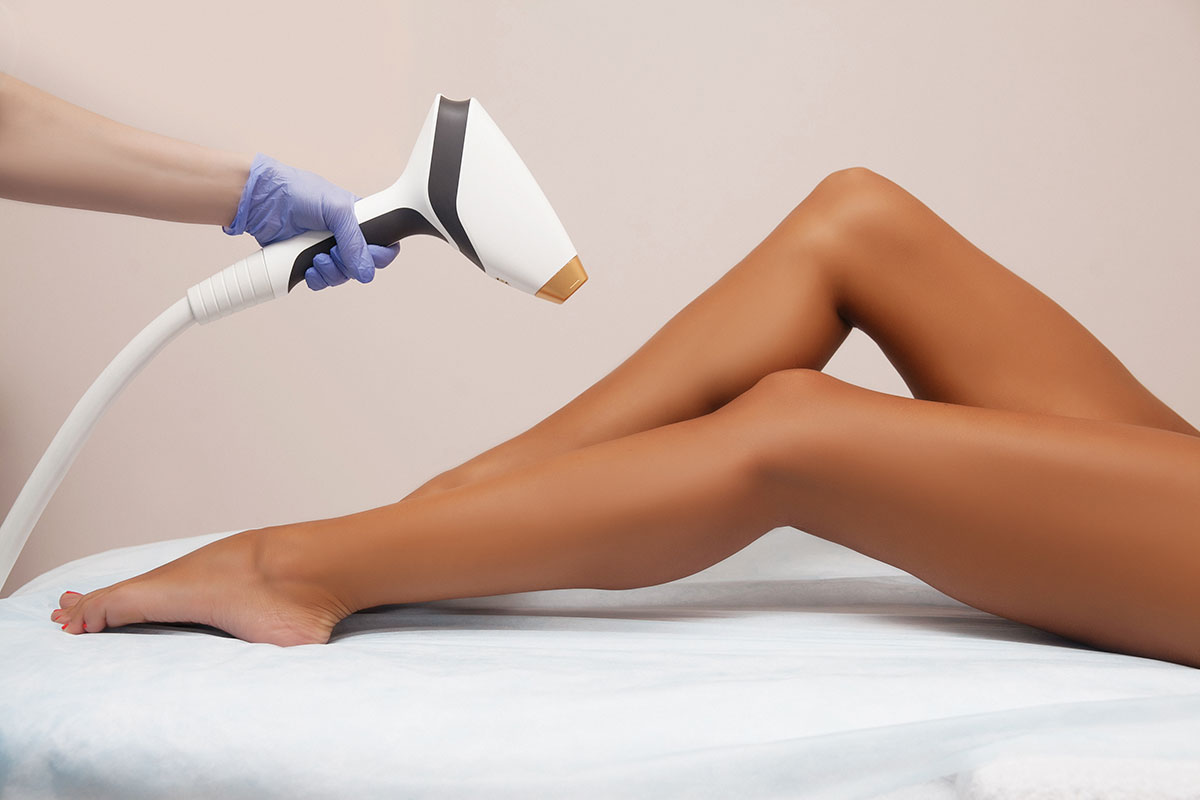Ever wondered why shaving and waxing feel like endless chores? Enter the game-changer: laser hair removal. This isn't just another beauty fad; it's a revolution in how we tackle unwanted hair, promising a smoother tomorrow. But hold up, is laser hair removal permanent? It's the question on everyone’s lips as they dream of ditching their razors for good. Imagine waving goodbye to those tedious, time-consuming grooming routines and saying hello to lasting smoothness. We're diving deep into the world of laser hair removal, debunking myths, and revealing truths. So, if you're sick of the constant cycle of shaving and waxing, stick around. We're about to uncover whether this high-tech solution can really grant your wish for permanently smooth skin.
Key Takeaways
- Laser hair removal can offer long-term hair reduction, but multiple sessions are needed for the best results.
- Preparing properly for treatment, including avoiding sun exposure and not waxing, can make the process more effective.
- The experience during the procedure varies; it's quick but can be uncomfortable, though many find it manageable.
- Following post-treatment care instructions, like avoiding sun exposure and using recommended skin care products, is crucial for healing and effectiveness.
- Achieving permanent results is possible but depends on individual factors like hair color and skin type; maintenance sessions may be required.
- Choosing the right provider is essential for safety and effectiveness; look for qualified, experienced professionals.
Understanding Laser Hair Removal
How It Works
Laser hair removal uses a clever science trick called selective photothermolysis. This fancy term means the laser light targets something specific with heat without damaging surrounding areas. In this case, it's all about zapping the melanin in hair follicles. Melanin is what gives hair its color.
The laser's light turns into heat when it hits the hair. This heat then damages the hair follicle, which is like a tiny hair factory under your skin. By hurting this factory, the laser slows down or stops hair from growing back. But it's not a one-time deal. You need several visits to catch all hairs in their growth phase.
Technology Behind It
There are a few different types of lasers for getting rid of unwanted hair. Two popular ones are Alexandrite and Diode lasers. Each type works best on different skin and hair colors.
Cooling systems play a big role too. They keep your skin safe and comfortable while the laser does its job. This means less ouch for you.
Technology keeps getting better, making treatments faster and more effective. Newer machines can target hairs more precisely, even on darker skin or lighter hair.
Comparing Methods
Laser hair removal has some big advantages over old-school methods like shaving or waxing. First off, it can save you money in the long run. No more endless razors or wax appointments.
It also wins in the long-term hair reduction game. Shaving cuts hair at the surface, so it grows back quickly. Waxing pulls out hairs but they still return. Laser treatment weakens hair roots deeply, leading to less growth over time.
Effectiveness and Permanency
Here’s the deal: laser hair removal can lead to permanent hair reduction but not total removal forever and ever. How well it works depends on your hair type and color, plus your skin shade.
Darker hairs on lighter skin usually see the best results because the laser can easily target the melanin contrast. If your hair is light or your skin dark, don't lose hope! Advances in technology are improving outcomes for everyone.
Remember though, patience is key. You'll need multiple sessions to get those smooth results since not all hairs grow at the same rate.
Common Questions Addressed
Pain Levels
People often wonder if laser hair removal hurts. The truth is, it depends on your pain tolerance and where you're getting treated. Some areas might be more sensitive. But don't worry too much. Many clinics use numbing creams to ease any discomfort. Most folks describe the sensation as similar to a rubber band snapping against the skin. It's quick and manageable.
Suitability Variations
Laser hair removal tends to work best for those with dark hair and light skin. This is because the laser targets the pigment in the hair. However, if you have darker skin, don't lose hope. Advances in technology have made it possible for people with various skin tones to receive treatment safely. It's crucial to get a professional consultation though. A specialist can assess your suitability and recommend the best course of action.
For individuals with lighter hair colors or those unsure about their eligibility, consulting a professional can shed light on alternative solutions or newer technologies that may suit their needs.
Side Effects
Like any cosmetic procedure, laser hair removal comes with potential side effects. Most people experience some redness, swelling, and temporary irritation in the treated area. These symptoms usually disappear within a few hours to days.
However, there are rarer side effects such as scarring or changes in skin texture. These are uncommon but highlight why following pre and post-treatment care instructions is essential. Your technician will guide you through these steps to minimize risks.
Session Numbers
How many sessions will you need? It varies widely depending on the area being treated and individual factors like hair thickness and growth cycle. Generally, most people see significant hair reduction after 6-8 sessions spaced several weeks apart.
But remember, hair growth varies among individuals; some might need fewer sessions, while others may require more for optimal results. Also, occasional maintenance sessions can help keep the area smooth over time.
Preparing for Treatment
Before Your Appointment
To get the best results from laser hair removal, preparation is key. Sunbathing and tanning beds can make your skin more sensitive to the laser. This sensitivity can lead to discomfort or even burns. So, it's wise to avoid the sun and tanning beds for at least two weeks before your session.
Another important step is to skip waxing or plucking in the area you're treating. These methods remove hair from the root. Since the laser targets hair roots, there needs to be something there for it to work on. Instead of waxing or plucking, shave the area you plan to treat 24 hours before your appointment. Shaving leaves the root in place but ensures the laser can work effectively without too much surface hair causing issues.
Choosing a Clinic
Finding the right clinic is crucial for a safe and effective treatment. Look for a clinic with licensed professionals who have experience in laser hair removal. They should know how to handle different skin types and hair colors. A good practitioner will make all the difference in your treatment experience and results.
It's also helpful to look for clinics with positive reviews from past clients. These reviews can give you an idea of what to expect and how satisfied others have been with their treatments. Modern equipment is another sign of a reputable clinic; newer lasers are often more effective and less painful.
Finally, don't hesitate to ask about certifications or qualifications when choosing a clinic. This step ensures that you're entrusting your care to someone who has been properly trained in laser hair removal techniques.
During the Procedure
What to Expect
Once you've prepared for your laser hair removal session, as discussed earlier, it's time to understand what happens during the procedure. Initially, you'll have a consultation with a specialist. They will review your medical history and skin type. This step ensures the treatment is safe for you.
A typical laser hair removal session lasts between 20 minutes to an hour. It depends on the area being treated. For example, removing hair from the upper lip takes less time than treating the legs.
Don't expect all hair to disappear after the first session. Laser hair removal usually requires multiple sessions for best results. After the first treatment, you might notice less hair growth. However, it becomes more noticeable after several sessions.
Treatment Process
The treatment process is straightforward but involves careful steps to ensure safety and effectiveness.
First, the area to be treated will be cleaned. If necessary, it may also be shaved. The laser equipment is then adjusted based on your specific skin color and the nature of your hair.
Both you and the practitioner must wear protective eyewear. This gear protects your eyes from harmful laser light during the session.
Before starting the full treatment, the practitioner will test laser settings on a small patch of skin. This step checks how your skin reacts to the laser. It helps in adjusting the laser settings if needed to avoid adverse reactions.
During treatment, a hand-held laser instrument is pressed against your skin. As it activates, you might feel discomfort, like a rubber band snapping against your skin or a warm pinprick sensation.
Cooling agents or cooling devices might be used before and after applying the laser pulses to help protect your skin and reduce discomfort.
Remember, patience is key with laser hair removal. You won't see instant results but gradual improvement over time as hair grows back thinner and less prominently with each session.
Post-Treatment Care
Immediate Aftercare
After the laser hair removal process, your skin needs tender care. Applying ice packs is a good start. It helps lessen any swelling and cools down the skin. Do this gently, without pressing too hard.
Avoiding direct sunlight is crucial. The treated area becomes more sensitive after the procedure. So, skipping sunbathing or long walks under the sun is wise.
Hot showers or baths might feel relaxing but are not ideal for the first 24 hours post-treatment. They can irritate your already sensitive skin. Stick to lukewarm water instead.
Long-term Skin Care
Taking care of your skin in the long run ensures better results from laser hair removal. Using sunscreen on treated areas cannot be stressed enough. It protects your skin from harmful UV rays and keeps it looking smooth.
Harsh chemical products are a big no-no. They can cause irritation or damage to your delicate skin. Opt for milder, more natural options instead.
A few days after treatment, gentle exfoliation helps with hair shedding. It removes dead skin cells and any remaining treated hairs fall out more easily.
Achieving Permanent Results
Number of Sessions
Most people need between three to eight sessions for optimal results in laser hair removal. This range can vary due to several factors. One major factor is hair density. Those with thicker, denser hair might require more sessions. Another consideration is the treatment area's size.
Touch-up sessions are often necessary after the initial course. They help maintain the smoothness by targeting any new growth. These follow-ups could be months or even years apart, depending on the person.
Factors Affecting Success
The effectiveness of laser hair removal greatly depends on hair color and skin type. Dark hair on light skin typically sees the best results. This contrast helps the laser target melanin in the hair more effectively. Lighter hair colors, like blonde or gray, may not absorb the laser light as well.
Hormonal changes can also play a big role in treatment success. They can cause new hair growth that wasn't present during initial treatments. Conditions like polycystic ovary syndrome (PCOS) can affect outcomes too.
The technology behind the laser matters a lot. Newer models tend to be more effective and versatile, catering to a wider range of skin and hair types.
Maintaining Smooth Skin
Lifestyle Tips
After achieving permanent results with laser hair removal, maintaining smooth skin involves more than just the initial treatments. It's crucial to consider how your lifestyle can impact the longevity and effectiveness of these results.
Avoiding nicotine and certain medications is a key step. These substances can interfere with the healing process and might affect how your skin responds to treatment. This means staying away from cigarettes and consulting with a doctor about any medications you're taking.
Staying hydrated and eating well play a big role in keeping your skin in top condition. Water helps keep the skin supple, making it less prone to irritation post-treatment. A diet rich in vitamins and antioxidants supports skin health, enhancing the smoothness and glow of your treated areas.
Limiting sun exposure is also essential. The sun can not only cause complications after laser treatments but also lead to premature aging and damage. Wearing sunscreen and covering up when outside helps protect your investment in hair-free skin.
Follow-up Treatments
Even though laser hair removal can provide lasting results, follow-up sessions are often necessary to capture any hairs that were missed or in a dormant phase during initial treatments.
Scheduling these follow-up appointments as recommended by your specialist ensures that all target hairs are treated effectively. This might mean coming back for a few sessions spread out over several months, depending on how your hair grows.
Follow-up treatments are also crucial for catching hairs that were previously inactive. Hair grows in cycles, and laser treatment is most effective on hairs in their growth phase. By returning for additional sessions, you ensure that as many hairs as possible are removed.
Lastly, don't be surprised if you need annual maintenance treatments. These aren't always necessary for everyone, but they can help manage any new growth and keep your skin looking its best. Think of them as part of your regular beauty routine, much like touch-ups for hair color or regular facials.
Myths vs. Reality
Pain Misconceptions
Many believe that laser hair removal is extremely painful. This isn't entirely true today. Thanks to advanced technology, modern treatments are much more comfortable. People often think that if it hurts, it's working better. This is a myth. The effectiveness of laser hair removal doesn't depend on the level of pain experienced.
There are also pain management options available. Cooling gels and numbing creams can make the process smoother. Some machines even have built-in cooling systems to ease discomfort.
Permanency Myths
A common misunderstanding is that laser hair removal offers 100% permanency. In reality, it leads to a significant permanent reduction in hair growth but might not remove every single hair forever. It's important to set realistic expectations before starting treatment.
Factors like hormonal changes can cause some hairs to grow back over time. Pregnancy, menopause, or certain medical conditions can affect your results.
Choosing the Right Provider
Qualifications to Look For
When seeking laser hair removal, checking a provider's qualifications is crucial. Look for certifications or licenses specific to laser treatments. These credentials show they have undergone proper training. It's not just about having a certificate on the wall; it's about ensuring they know the latest techniques and safety protocols.
Experience matters too. Ask how long they've been performing laser hair removal. Providers with years of experience often deliver better results. They've seen a variety of skin types and hair colors, making them adept at customizing treatments.
Don't hesitate to request before-and-after photos of their previous clients. These images offer tangible proof of their skills. Seeing real outcomes helps set realistic expectations for your treatment.
Consultation Importance
A consultation plays a key role in the laser hair removal process. It's not just a formality; it's an opportunity to see if you're a good candidate for the procedure. The practitioner will assess your skin type, hair color, and treatment area to tailor a plan that suits you best.
During this meeting, setting clear expectations is vital. Laser hair removal can significantly reduce hair growth, but results vary among individuals. The consultation allows you to understand what the treatment can realistically achieve.
It's also your chance to ask questions and express any concerns. Whether it’s about pain management or post-treatment care, getting answers directly from a professional can ease any worries you might have.
Closing Thoughts
You've journeyed through the ins and outs of laser hair removal, from prepping for your first zap to busting myths that've been floating around. It's clear now that while the path to silky-smooth skin isn't overnight, it's definitely within reach. Choosing the right provider is your final step—think of it as picking a partner in your quest against unwanted fuzz. Remember, achieving and maintaining those bare skin goals is a team effort.
hat's stopping you? Dive in, and let's kick those hairy woes to the curb together. Your confidence boost is just an appointment away. Smooth sailing ahead!
Frequently Asked Questions
Is laser hair removal permanent?
Yes, it can be! Laser hair removal significantly reduces hair growth to the point that you can stop shaving altogether. However, some might need occasional touch-ups.
How do I prepare for laser hair removal?
Make sure your skin is clean, avoid tanning, and don't pluck or wax. Shaving is okay since it leaves the root intact for the laser to target.
Does the procedure hurt?
It's more of a quick zap than a pain. Imagine a rubber band snap against your skin. Most find it totally manageable!
What does post-treatment care involve?
Keep the area cool and moisturized. Avoid sun exposure to prevent irritation on your freshly treated skin. Think of it as babying your skin for a bit.
Can I achieve permanent results after one session?
Not quite. You'll see significant reduction but achieving permanent results typically requires multiple sessions spaced out over time.
How do I maintain smooth skin after treatment?
After completing your sessions, touch-ups may be needed once or twice a year to keep any rogue hairs at bay.
How do I choose the right provider for laser hair removal?
Look for certified professionals with good reviews and modern equipment. Your skin deserves someone who knows their lasers inside and out!












